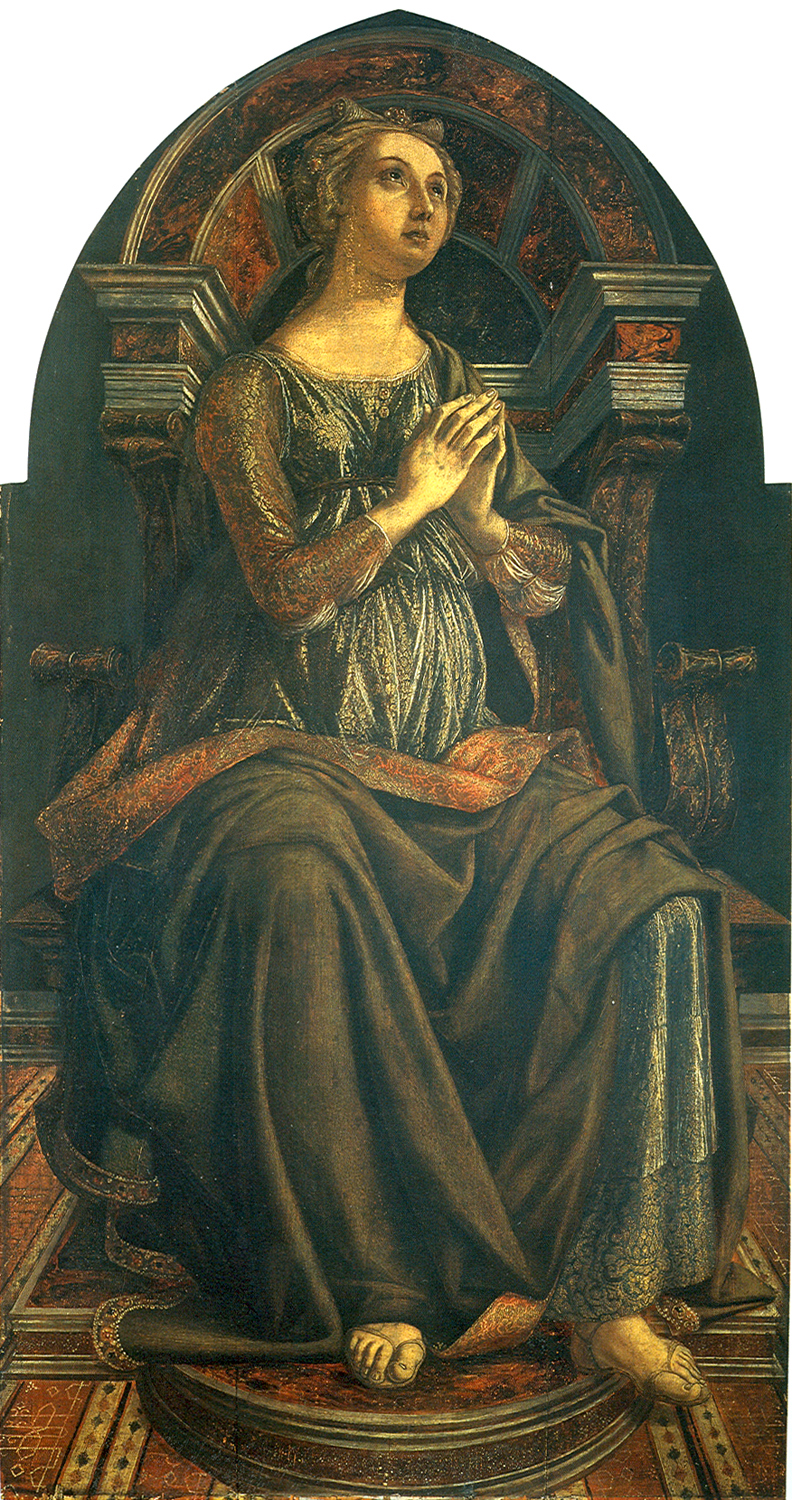Hope (Pollaiuolo) on:
[Wikipedia]
[Google]
[Amazon]
 ''Hope'' is a 1470 oil on panel painting by
''Hope'' is a 1470 oil on panel painting by
 ''Hope'' is a 1470 oil on panel painting by
''Hope'' is a 1470 oil on panel painting by Piero del Pollaiuolo
Piero del Pollaiuolo ( , , ; also spelled Pollaiolo; in Florence – 1496 in Rome), also known as Piero Benci, was an Italian Renaissance painter from Florence. His brother was the artist Antonio del Pollaiuolo and the two frequently worked ...
, now in the Uffizi
The Uffizi Gallery (; it, Galleria degli Uffizi, italic=no, ) is a prominent art museum located adjacent to the Piazza della Signoria in the Historic Centre of Florence in the region of Tuscany, Italy. One of the most important Italian museums ...
in Florence
Florence ( ; it, Firenze ) is a city in Central Italy and the capital city of the Tuscany region. It is the most populated city in Tuscany, with 383,083 inhabitants in 2016, and over 1,520,000 in its metropolitan area.Bilancio demografico an ...
.
History
Florence's Tribunale della Mercanzia (the body overseeing all the city's guilds) commissioned the artist to paint seven works portraying the cardinal virtues in a contract dated 18 August 1469. They were intended to decorated the seat-backs in its audience hall onpiazza della Signoria
Piazza della Signoria () is a w-shaped square in front of the Palazzo Vecchio in Florence, Italy. It was named after the Palazzo della Signoria, also called Palazzo Vecchio. It is the main point of the origin and history of the Florentine Republ ...
. ''Charity
Charity may refer to:
Giving
* Charitable organization or charity, a non-profit organization whose primary objectives are philanthropy and social well-being of persons
* Charity (practice), the practice of being benevolent, giving and sharing
* Ch ...
'' was the first painting to be completed and was delivered in December 1469.
The commission was temporarily transferred to Botticelli
Alessandro di Mariano di Vanni Filipepi ( – May 17, 1510), known as Sandro Botticelli (, ), was an Italian painter of the Early Renaissance. Botticelli's posthumous reputation suffered until the late 19th century, when he was rediscovered ...
, probably after a delay by Pollaiuolo. Botticelli produced '' Fortitude'' before loud protests from Pollaiuolo and his brother Antonio
Antonio is a masculine given name of Etruscan origin deriving from the root name Antonius. It is a common name among Romance language-speaking populations as well as the Balkans and Lusophone Africa. It has been among the top 400 most popular male ...
led to a second contract returning the commission to Piero and his studio to produce the remaining six works in the series. In completing it, it is unclear how much of a contribution Antonio made to Piero's work and some art historians have attributed it instead entirely to Antonio. Billi, Albertini and Cruttwell argue from documents that the whole cycle was by Piero, whereas Ullman and others attribute all six works to Antonio based on stylistic comparisons with the few signed works by Antonio, including prints. Yet others attribute the composition of the work to Antonio but the paintings themselves to Piero. Gloria Fossi, ''Uffizi'', Giunti, Firenze 2004.
After the magistracy moved into the Uffizi, the paintings were exhibited in the gallery from 1717 onwards after the Tribunale was suppressed. In the 19th century the works were in such a poor state of conservation that only ''Prudence
Prudence ( la, prudentia, Contraction (grammar), contracted from meaning "seeing ahead, sagacity") is the ability to govern and discipline oneself by the use of reason. It is classically considered to be a virtue, and in particular one of th ...
'' was exhibited.
References